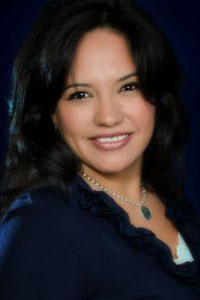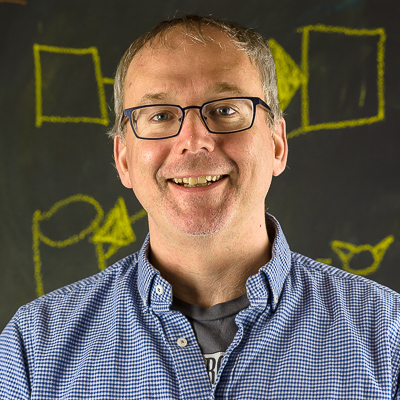Using the theory ‘Hire humans. Not skills. Not roles.’ as inspiration, the Lab’s profiles are Q&As with highly-impressive makers and strategists from media and its fringes, each with unique perspectives on journalism, publishing and communications technology. We’re talking to smart people who are shaping the future of media. Not all of them work in a newsroom, not all are big names, not all have fancy titles, but each is a bright person with something to say. Catch up and/or follow the series here.
After several years as an investigative reporter at La Opinión, Claudia Nuñez had honed her journalistic skepticism. In 2010, a front page New York Times story left her with questions about the analysis, and she realized she needed to develop her own data journalism skills. Shortly after, she earned a John S. Knight Journalism fellowship, where she developed RDataVox, an online data visualization network for ethnic media journalists and non-profit organizations. Last December Nuñez organized a large scale hackathon on the topic of immigration in Los Angeles. Now, working with the Institute for Justice in Journalism, she is organizing a follow-up event, the Chicago Migrahack. In advance of the event, we asked her a few questions.

How did you get involved in traditional journalism?
Claudia: As far as I can remember, journalism has been part of my life. My father is a photojournalist and I grew up doing my homework in a corner of the editorial room or in the photo lab. However, it was my grandfather’s killing that sealed the genre of journalism that I would dedicate myself to. My grandfather was a photographer who was stoned and killed by a group of hoodlums after he published a photo of them in the leading newspaper for which he worked. I remember hearing him talk about the threats and the importance of letting everyone else know the faces of these people who had a hold of the neighborhood. After my grandfather’s death, many things changed in my life and I was more sure than ever of my decision.
How did you get involved in data journalism?
Claudia: There was one particular article in The New York Times that marked my entry into data journalism — “Some Unlicensed Drivers Risk More Than a Fine”. The story chronicled the deportation risk faced by undocumented immigrants for a minor traffic infractions. My first thought was “La Opinión readers know better than anyone else the danger.” However, after that initial thought, it was the multimedia map that captivated me—the statistical analysis, the databases, and the message that the data wanted to convey. I was able to see the power hidden behind the numbers. Within five minutes, that map created a bigger impact than the article itself. I questioned the choice of databases and the analysis. It appeared to me that the numbers were forced to tell the story the reporter wanted.
“How do I find out what the data really says? What is the correct data? How do I learn how to interview and present the numbers? ” Those questions marked my entry point.
What led you to apply for the Knight fellowship?
Claudia: One of my editors at La Opinion was always telling me that I should apply for the fellowship. I was a big fan of data stories and visualization and wanted to empower the information that we offered to our communities, but, perhaps due to my own fears, I did not do so until I met Phuong Ly, a Knight Fellow. I met Phuong at an immigration fellowship at UC Berkeley in which I was a participant, and she had asked to be allowed to present her project that was under development and listen to our suggestions. Phuong presented a human side to her journalism, her challenges. I think seeing the significance of what it means to be a Knight Fellow and having the passion to transform and innovate journalism gave me the push that had been missing until that moment.I am a journalist that works for the Hispanic community and I need your help…
What was the biggest surprise at your first Migrahack?
Claudia: Undoubtedly, it was the Los Angeles community’s response and collaboration. It was not only from the journalists, but also from the programmers and data scientists. Up until that moment, no one had presented us journalists (who cover immigration), the opportunity to be a part of a hackathon. The response was immediate. I also remember one occasion during the announcements at a behavioral data conference at Cal Tech, when I took the microphone and the first thing that came out of my mouth was “I am a journalist that works for the Hispanic community and I need your help…” To my surprise, programmers and data experts not only guided me on how to frame my first hackathon, they also attended all of it. The first Migrahack was intended to be for 30 people, but more than 100 registered.Up until that moment, no one had presented us journalists (who cover immigration), the opportunity to be a part of a hackathon. The response was immediate.
Why did you choose Chicago as the venue for your second Migrahack?
Claudia: Chicago is incredibly rich ethnically. Not only is the immigrant population there significant, it also has a unique diversity. Phuong Ly, the Executive Director of IJJ, was a major supporter of the Migrahack and after seeing the energy the event generated in Los Angeles she spoke to me about the possibility of porting it to ethnically-rich Chicago where she used to live. Thanks to the support from the MacArthur Foundation, what started as an idea is now reality.
What do you have planned after the Migrahack?
Claudia: I would like to take the Migrahack concept to those communities where the immigrant presence is relevant, to sow the seeds so that journalists with strong connections to those communities learn about the enormous possibilities that are offered today by data and technology. The first step is always the hardest one, but if the one who helps you take that first step is another journalist — who knows the limitations and barriers faced everyday — then that creates the necessary trust. Another project is to form a data blog where we would integrate projects and databases from the Migrahacks to serve as a forum to keep the energy and learning active so that we can continue to learn together.
How can people use technology to create change in the world?
Claudia: From my perspective, we would need to change the question from “how” to “why don’t they use technology to change the world?” and answer it with sincerity. Then we may be able to offer solutions.
In my personal case, as a mother who works most of the time from home and when away is always connected to the net, technology has given me the gift of being present in the lives of my daughters. Perhaps this doesn’t change the world, but it changes hers.
If you could design an app that would solve any problem in the world, what would it be?
Claudia: Maybe this does not qualify as a “major wrong” that is ailing the world, but it would definitely help eliminate some of them. If I could, I would design an international mobile app that would allow for fair money transfers from workers abroad to family back home (wherever that may be). Such an app would solve many of today’s social problems. Remittance services are currently extremely expensive. In some countries, the fees are as high as 20% of the workers’ salary and although the situation is improving (PayPal is working on some ideas), much work still remains.The freedom to practice journalism without fear of intimidation or death threats, a luxury
If you could change one thing about media today, what would you change?
Claudia: The lack of diversity, gender, and voice inclusion.
Who inspires you most?
Claudia: My fellow journalists who work with scarce resources in high-risk areas, yet they persevere to bring their quality work to the readers.
What is the biggest luxury/indulgence in your life?
Claudia: The freedom to practice journalism without fear of intimidation or death threats, a luxury for which dozens of Mexican journalists have been beaten and killed – great friends, my family – and Mexican society, without the government’s protection that saw this coming and yet did nothing, not even provide comfort the families.
What do you read religiously?
Claudia: rtumble.com, The NY Times, LA Times, El Universal de Mexico, La Opinion, and the tweets from some journalists.
What applications do you have open while you're working?
Claudia: Twitter, Google Translate, Flipboard and Pocket.
What could the world use a little more of?
Claudia: Tolerance.
What could the world use a little less of?
Claudia: Stereotyping.
Follow Migrahack on Twitter, @migrahack and make sure to sign up for the Chicago event, May 31 – June 2, during the National Day of Civic Hacking. Find weekly updates from our profiles series on Fridays.
About the author





